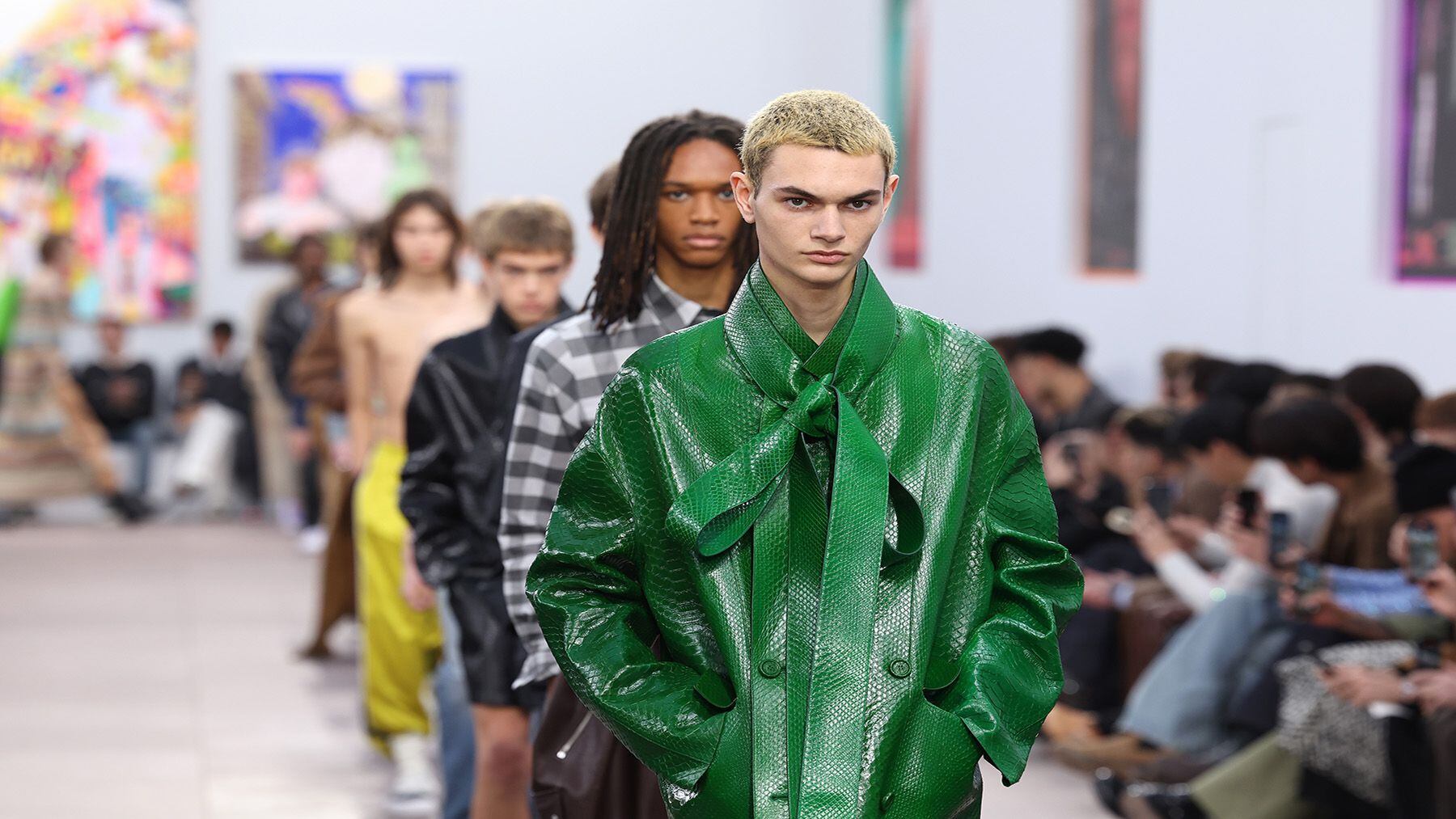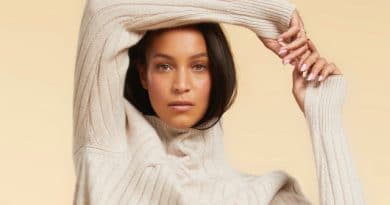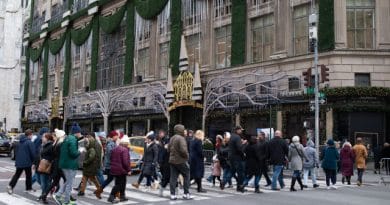In Paris, a Battle Between Loud and Soft
PARIS — The men’s fashion week that ended on Sunday was mostly a battle between the quiet and the bold; the volume turned up or kept low. Being loud, of course, can come in many forms, however. And if things got tacky at Louis Vuitton, where Pharrell Williams served his wealthy, money-flaunting audience an American West fantasy where more was definitely more, Rick Owens released a powerful howl that was inventive, liberating and, despite the deliberately grotesque tone, strangely soothing.
The endeavour resonated perhaps, in part, because it was refreshingly intimate, held in Owens’ own mansion on Place du Palais-Bourbon, where the designer explored humongous shapes of almost inhuman proportions, as well as elegant elongation, playing with draping and huge volumes, with texture and colour. That he involved a bunch of equally boundless renegades in the creation of the collection — Straytukay did the inflated rubber boots, Leo Prothman theKiss boots, Matisse Di Maggio a range of rubber pieces — created a sense of community. If fashion’s unchained animals are rare specimens today, they gather in the church of Rick Owens, torch-bearer of invention and winner of the season.
The way Walter Van Beirendonck has remained a true fashion animal, largely outside the system, for almost forty years is admirable, as is the unique way in which he merges the cartoonish with the sexual, the humorous with the aggressive. His latest outing was a riot: otherworldly creatures in various states of clothed abstraction carrying, each one, their own music in the form of a ring-speaker.
Back in Paris after a hiatus of a few seasons, Benjamin Alexander Huseby and Serhar Isik went utterly personal at GmbH, in a Palestinian-inspired collection that was a clear reaction to the war and wider Islamophobia that has gripped much of the western world. Introduced with a heartfelt speech by the designers, this was an outing full of gravitas and heavily redolent, in the best of ways, of Miguel Adrover’s wonderful take on Middle Eastern references. There was an elegance that wove through the round cuts, the keffiyehs, the somberness and the seduction: a reminder that beauty can be a saviour.
Miharayasuhiro went for supersizing this season, which is nothing new, but his take on it was so extreme — the models looked like adults imitating kids wearing adult clothes — and it was poignant. King of mega-sizing Hed Mayner, meanwhile, went classic, as in suit and tie for the office and trainers for daily commutes, showing a surprisingly humorous side that felt fresh and progressive.
Playfulness was a welcome addition at Homme Plissé Issey Miyake, too, where the creative collaboration with Ronan Bouroullec translated not only in a series of bulbous prints, but also in a bevy of multipurpose shapes that allowed for various interactions between clothing and the wearer, and a joyous sense of freedom. Meanwhile, at Kiko Kostadinov: the angular cuts and surface tension that gives his work the permanent allure of costumes devised for some obscure, art-house sci-fi movie. In other words, there is a vision there, but Kostadinov’s intent could use some clarifying.
The emphasis on classicism and tailoring that was all over Milan also popped up in Paris. Most inventive of all was Junya Watanabe, who used his tailoring prowess with resourcefulness, creating pencil thin coats by attaching sliced trousers to blazers (very Martin Margiela, truth be told) and capes by sewing sleeves to the bust of coats, all while keeping the look rough and a bit punky.
At Sacai, Chitose Abe continued to explore hybrids and items of clothing with multiple functions, but her approach is becoming more and more architectural as time passes, much to her benefit. Her tailoring skills remain remarkable, and her idea of the uniform is affirmative.
Elsewhere, the broad-shouldered tailoring at Louis Gabriel Nouchi was seductive and superhuman, but also positively inclusive due to the transversal casting, and yet the brand needs to define a stronger voice and a sharper focus past the idea of linking each collection to a book, which is growing thin.
At Yohji Yamamoto, it was badass and maudit slouchy elegance as ever. The Japanese master has probably said all he has to say in terms of masculinity, and he has entered a phase of maintenance, but his work is still a joy to behold.
At Hermès, where Veronique Nichanian is a force of her own, the tailored lines were slim and the spirit rebellious, her graphic take on elegance at once timely and enduring. Meanwhile, at Paul Smith it’s always about classicism with a twist, which this season came in the form of quilted, workwear-inspired vests that went on top of everything.
Grace Wales Bonner has a hand so soft it is almost impalpable, and yet there is strong power to what she does, and a good energy in her ability to gather a creative community. This season she delivered a take on Americana that felt particularly light and easy, and exquisite because of that.
Tailoring is always playful and complex at Kolor, where Junichi Abe produced a powerful collection, reworking a bunch of classics in his own peculiar way, at once deranged and proper.
At Givenchy the interim effort developed by the team after the exit of former designer Matthew Wiliams was an exploration of the idea of the gentleman, with feminine touches like the headscarves and feathers, and a certain dryness. A show devised by a headless team is always hard to judge. This one seemed a bit directionless at times, but there was a sensibility at work.
At Amiri, slouchy and glitzy formality on the edge of adolescence and adulthood, with a charming and all-defining LA ease to it, made for a collection that marked a step up for this fast-growing brand.
In a season of tailoring and the strictly codified, classic representation of the male that typically accompanies it, the case for soft masculinity was not completely missing. On the contrary, the merging of tailoring and fey masculinity produced some noteworthy results, from the pleated skirts and shrunken double-breasted jackets at Comme des Garçons, where Rei Kawakubo was feeling light and spiritual and managed to make even black seem sparkly and giddy, in a pearly kings and queens kind of way, to Valentino’s graceful yet dry rethinking of the suit and what revolves around it.
Valentino designer Pierpaolo Piccioli has long been involved in a battle against toxic masculinity, but this was the first time he truly delivered on the idea and the results felt viable. This happened because he operated within the frame of formality, hollowing everything out from the inside while keeping the silhouette exact and the spirit light, and avoiding the trap of a young look at any cost.
Dries Van Noten was in top form, another winner of the season. By playing with the notion of the unexpected, and working on a tall and slender but also slouchy and easy line, Van Noten proved a master colourist while adding the surprise of sensuality and playfulness in the zippers that allowed sweaters to come undone, in the combination of items that had had an impromptu energy to them, all if it grounded on super-flat slippers that looked like balled shoes and made the silhouette truly dance.
Speaking of dance, at Dior, Kim Jones opted for a Rudolf Nureyev-inspired collection that was probably his most assured since the start of his tenure at the house and coincided with the launch of couture for men. Exploring Nureyev’s persona and unique sense of style on- and off-stage, Jones delivered an effort that was light and streamlined, fey on the one hand, exuberant, even opulent, on the other. Not all of it glued, and a less referential hand would have probably helped, but as a spectacle the show, choreographed by Baillie Walsh, with music by Max Richter reinterpreting Prokofiev, was truly moving.
Also wonderful as a show was Kenzo, which took place in the grand main reading room of the Bibliothèque Nationale, amongst books, wrought out woods and gilded stuccoes. This was a magnificent backdrop for a rather predictable collection that was the nth reiteration, albeit slightly more focused, of the East meets West topic that is the defining ethos of the house.
In Paris, the contingent of realist designers working on perfectly normal yet utterly special wardrobes meant for everyday use keeps growing, each with their own unmistakable touch. Lemaire is certainly the leader in this school of thinking: what Christophe Lemaire and Sarah-Linh Tran do with clothes that truly meld with the wearer and allow personality to shine though is outstanding. This outing was particularly soft and layered, and benefited from being shown in the label’s whitewashed Marais headquarters.
Officine Generale’s Pierre Maheo manages to capture the quintessential Parisian touch in everything he does. His work has an immediacy and an elegant spontaneity that explain his unstoppable success.
A welcome new addition to the calendar, Auralee, the brainchild of Japanese designer Ryota Iwai, has always been about normal but beautiful clothes. His debut catwalk show was exquisite in every sense, from the colour combination to the allure the looks exuded: that of memorably subtle passers by met on the street. In comparison, the first catwalk outing from 032c, the line that started as merch for the eponymous magazine and has grown into an endeavour of its own, felt both heavy handed and deja vu.
Idris Balougu showed his Winnie collection in the aisles of the American Library: a fitting ambience for a collection of perfectly normal clothes with a slight forced air of cool student to them. Coolness is fine, but it cannot be a substitute for substance.
Leave it to Jonathan Anderson to bring the tritest normality — tracksuit bottoms worn with white sport socks and trainers, anyone? — to a grotesque level of social commentary on thirst traps and the levelling up of today’s culture, making Loewe the other standout, truly authoritative effort of the season.
The collection was as conceptually twisted as it was plain, visually engaging (thanks to the collaboration with artist Richard Hawkins that extended from set to clothing) as it was technically masterful (many of the looks featured items that were attached one to the other, from the shoes up to the jacket, forming one single piece), making for multilayered meaning served with blatant directness and sardonic humour. Everything today is on the same level, a collaged reality of this and that, co-existing on the same plane: this was the idea, which made for a bit of a commentary on the state of affairs in fashion, too.



